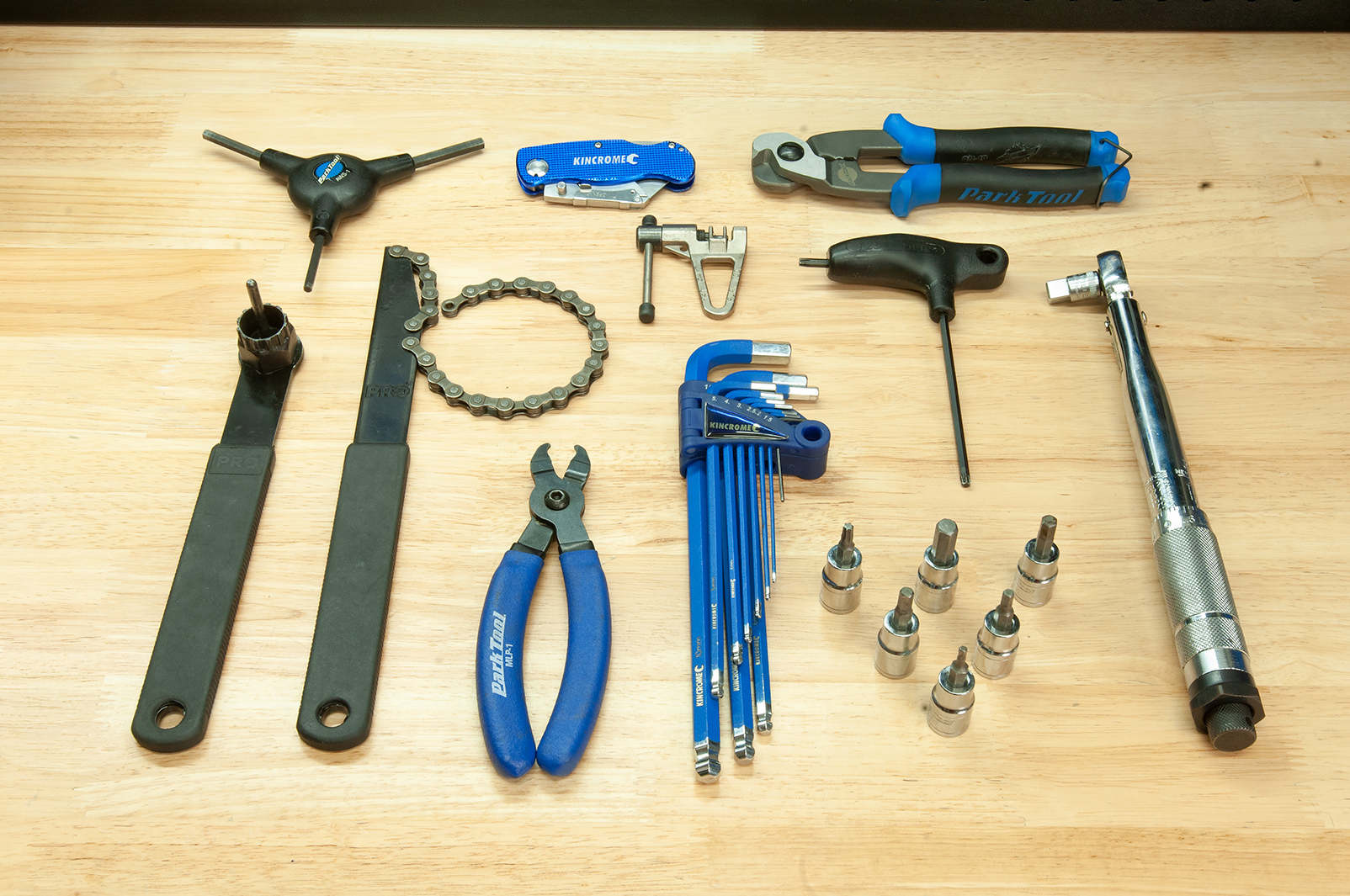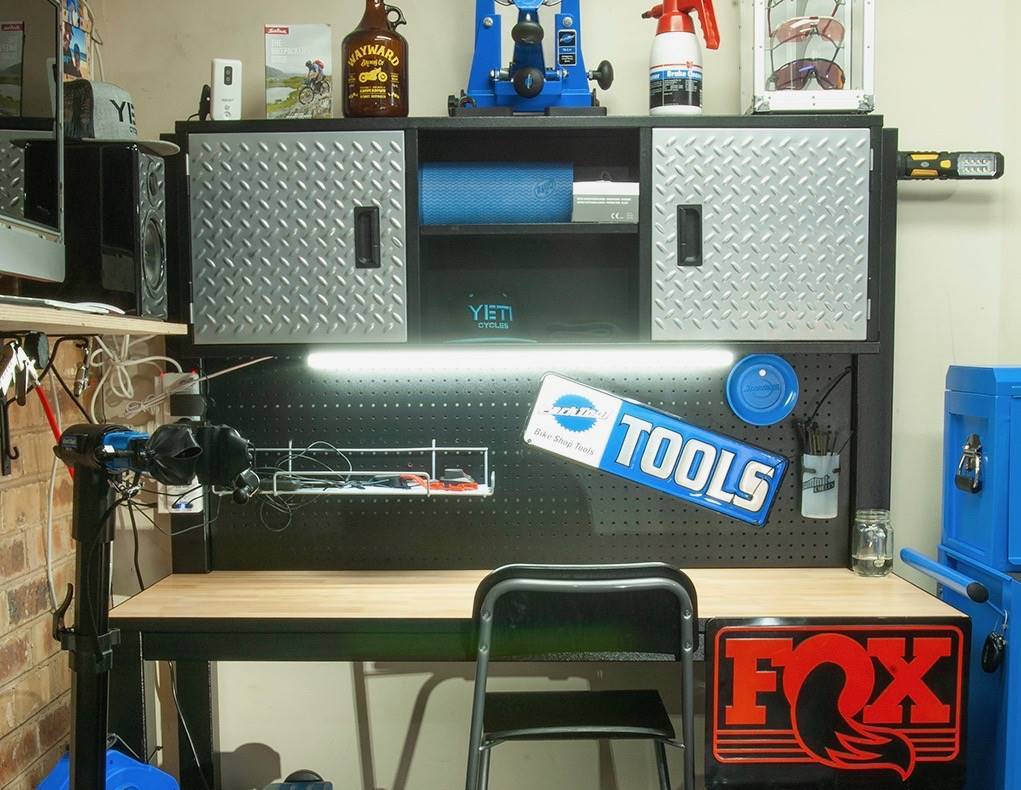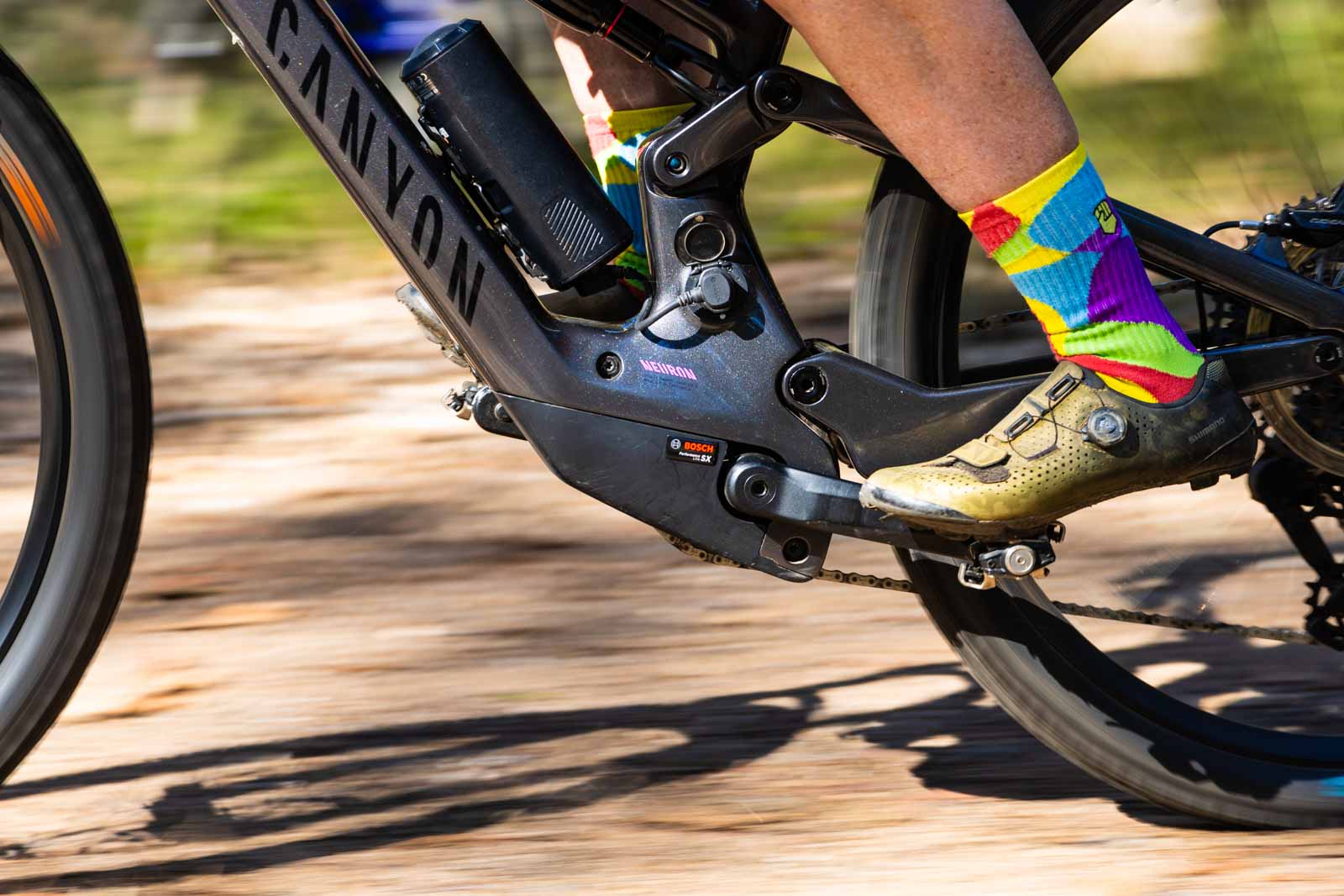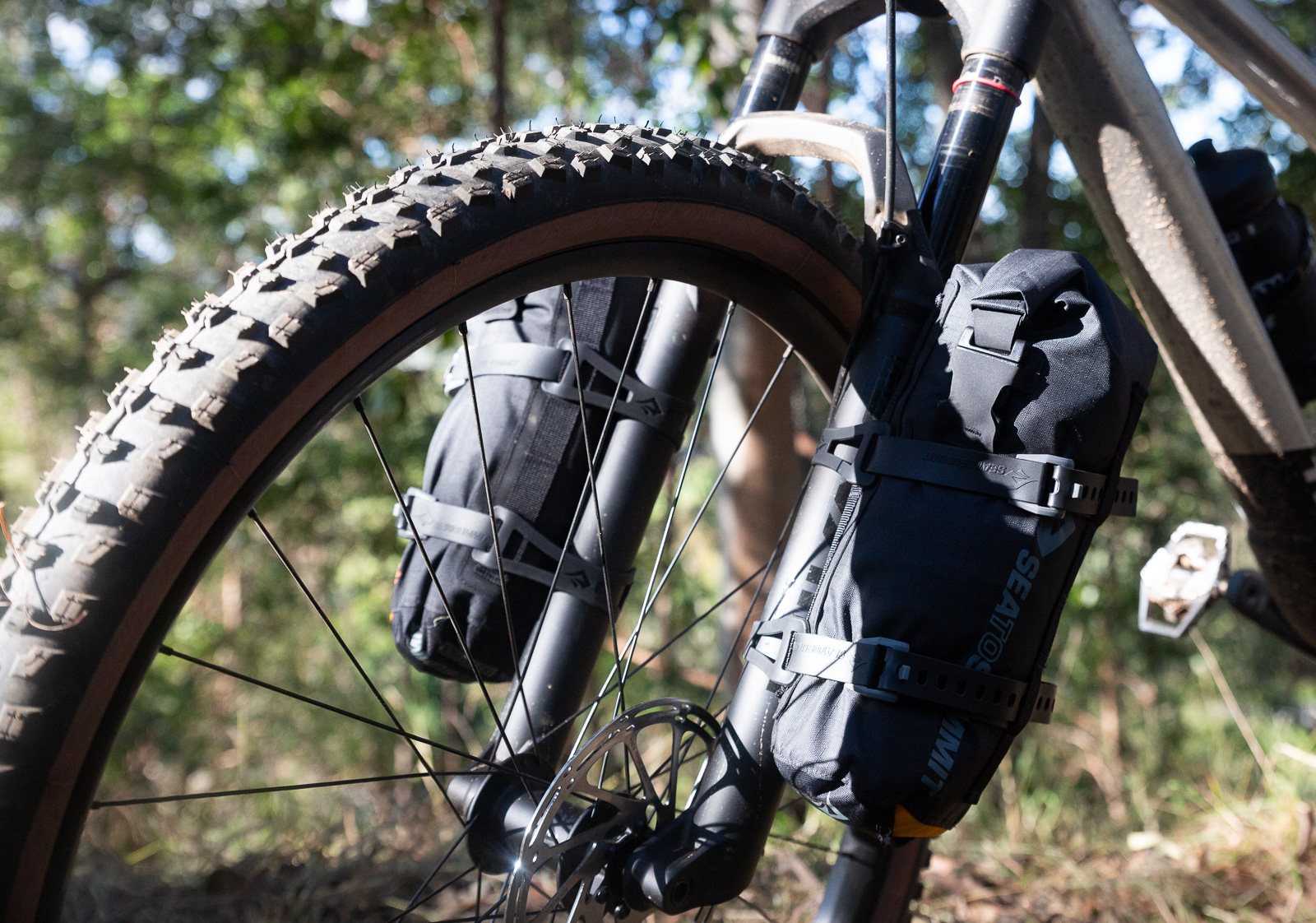WORKSHOP: How to set up your own workshop
We guide you through setting up your own home workshop!
Words: Joe Dodd Photos: Chris Herron
Given the current situation in the world right now, it’s a perfect time to consider setting up a small workshop space. We are going to talk you through a few things to consider when setting one up.
- Lighting
Lighting is really important for your work space. You need as much light as you can get. There is nothing worse than not being able to see whilst working. Consider day and night lighting. Setting up next to a window will obviously be great in summer, but not much good at this time of year with short days. Think about if you will be doing most of your mechanical work after work hours in the evening. Also notice that in this setup, there are bright lights above the work stand as well as above the work bench.
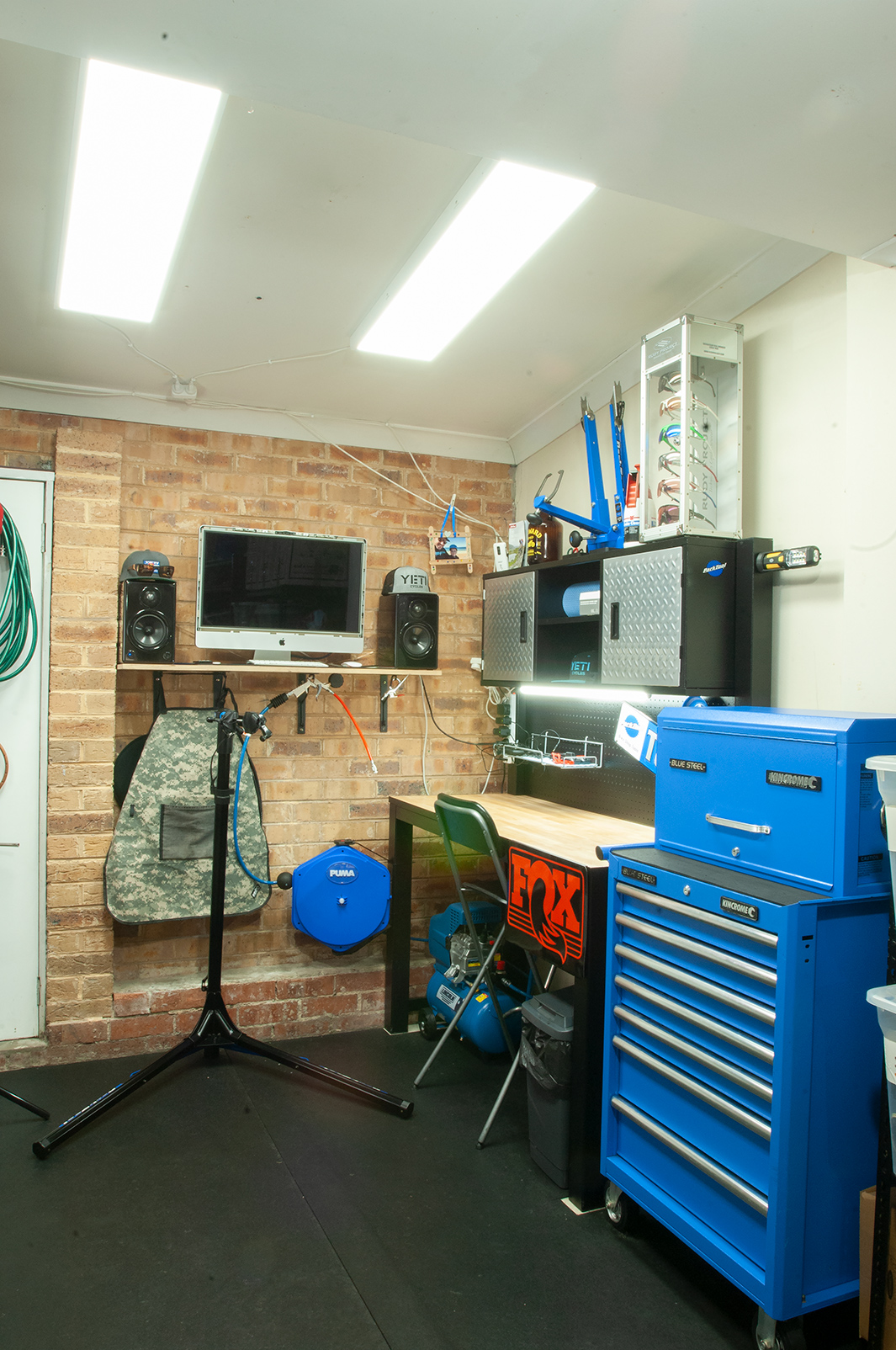
- Work bench.
You will need some sort of work bench. Do not get in the habit of putting tools and parts on the floor. You will eventually lose that important small part!
If you are building a specific work bench, have a think about a perfect height for you, I prefer a bench on the higher side, so you aren’t bent over a lot when working on it. Also think about leg space to sit underneath it. This is handy for longer jobs such as wheel truing and building (if you are considering this sort of home workshop work).
Will you be mounting a vice to your bench? Make sure it is out of the way, and sturdy enough to mount one. You don’t want metal shavings after cutting a fork all over your main working area.
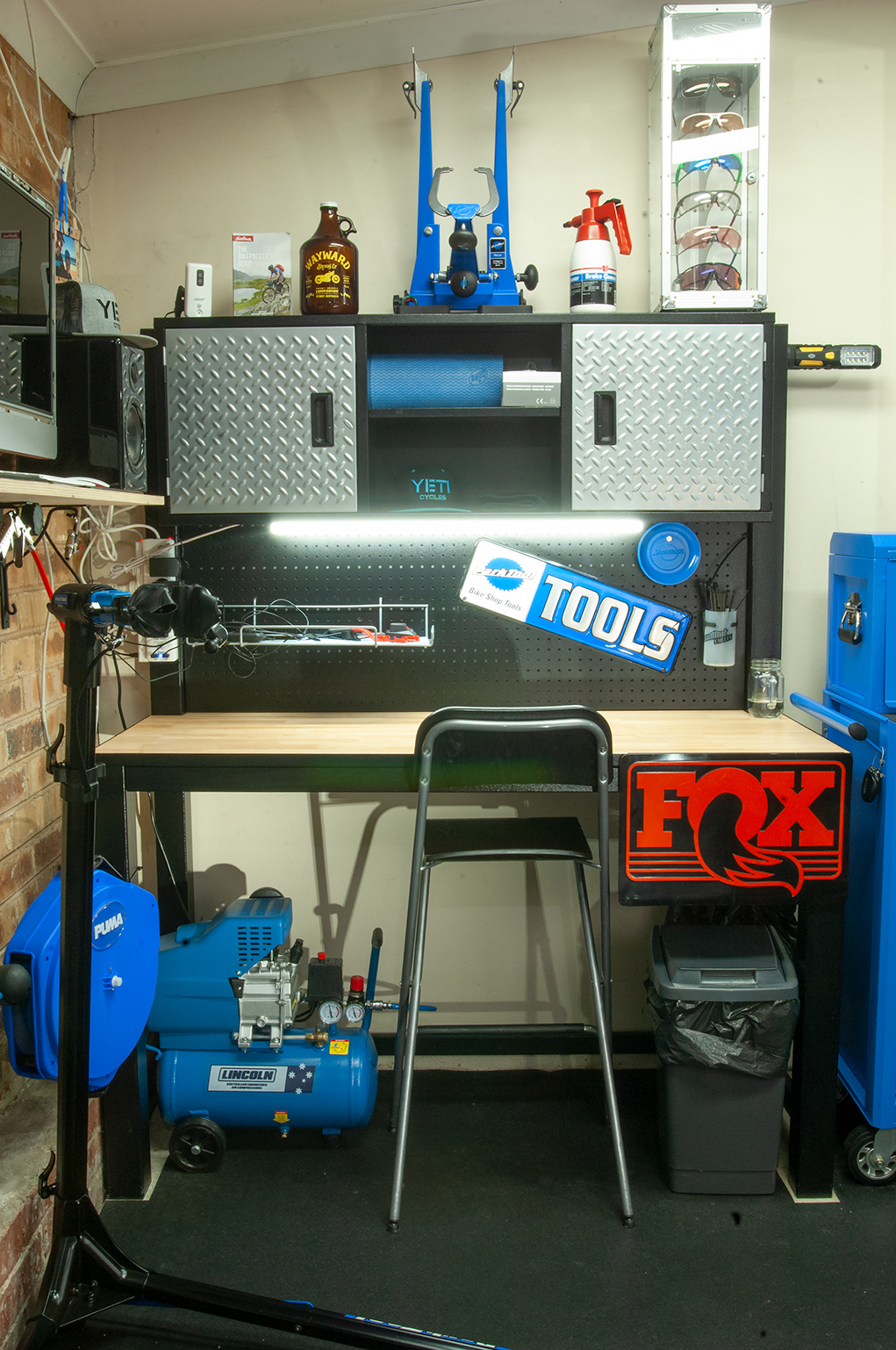
- Work stand
There are a few different options for work stands. A fold up, portable one like pictured is great for all home mechanic work. Make sure it has long legs and plenty of support. I have heard many stories of bikes falling over when stored in cheaper and less sturdy work stands.
Wall mounted work stands are also an option. These are generally a little cheaper, but make working on both sides of the bike at the same time difficult. They are great for more confined work areas. Get the best work stand you can afford!
- Tool storage
You don’t have to have a huge tool box as pictured here, but think abut how you want to store all your tools. Obviously you can pop them in a tool chest, but there are other options. You can hang them on a shadow wall behind your work bench, or in draws under your bench. What ever will work best for you. Think about the future, the more work you start doing yourself the more tools you will acquire. Try and keep tools organised so you have more work area on your bench and you don’t get frustrated looking for a specific tool.
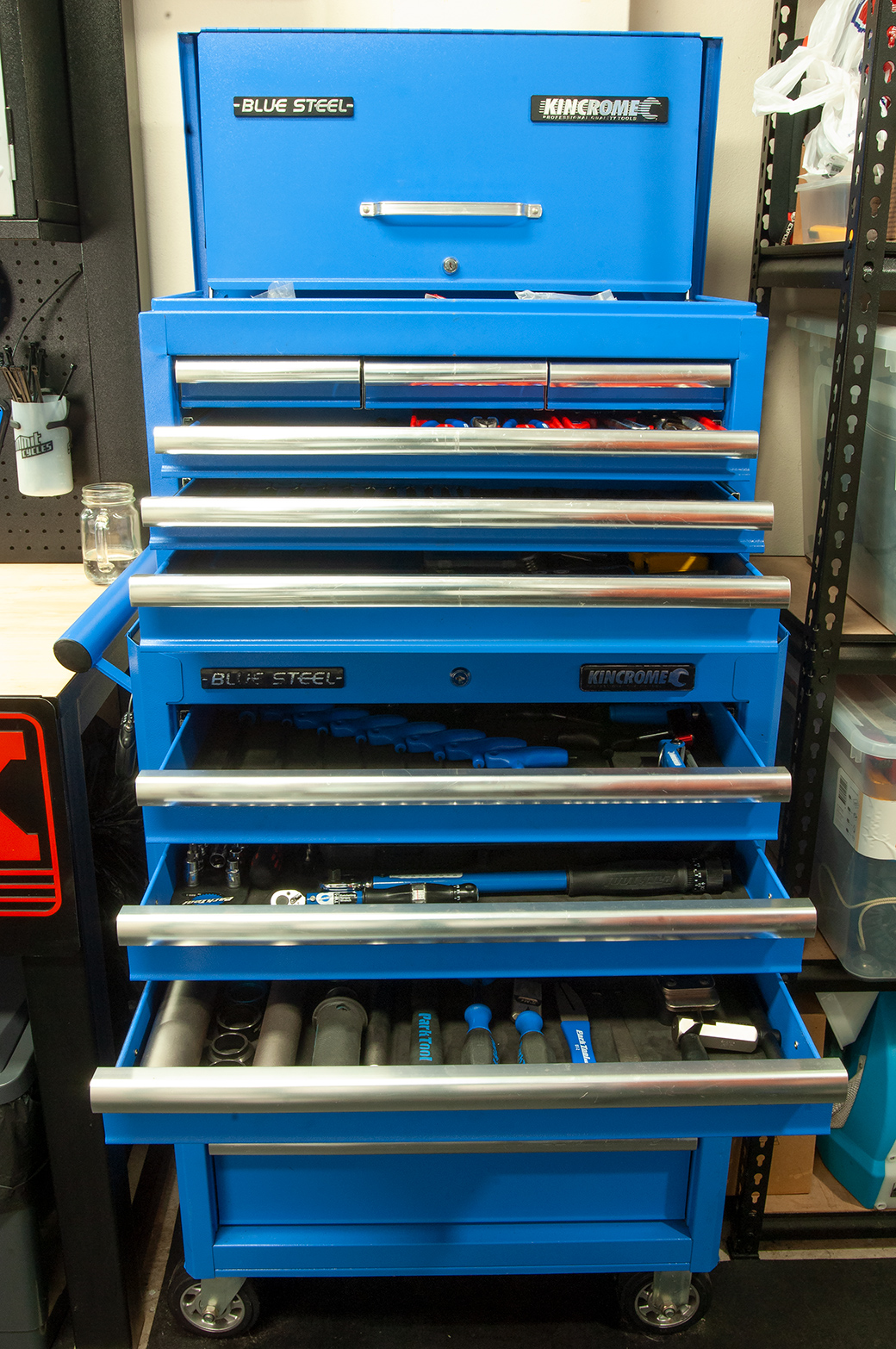
- Compressor
A compressor is a bit of a luxury, but makes tubeless setups simple and easy. With an air nozzle attachment it’s also great at clearing any excess water after cleaning your bike.
- Lubes and grease
This is an extensive collection of speciality lubes and greases, but as a minimum you need a good quality grease, chain lube and degreaser suitable for cleaning your drive train. It is always a good idea to keep all these products somewhere easy to clean as they can get quite grubby. These are stored above the work bench, so easy to reach whilst working, but also in a cabinet out of the reach of children.
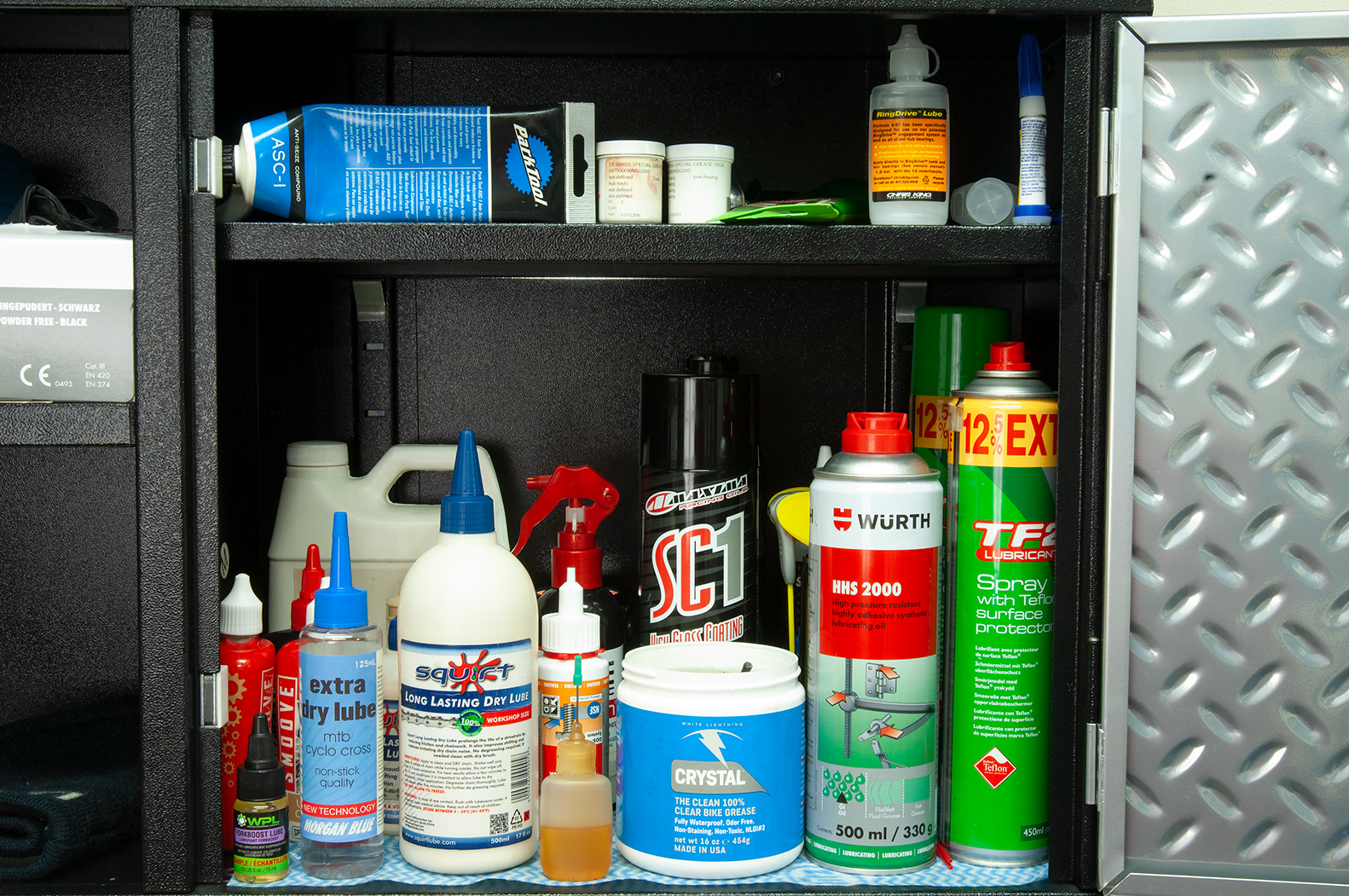
- The essentials
This is a small selection of basic tools I would recommend for people starting a small home workshop.
- Allen keys: Grab a good quality set of Allen keys ranging from 1.5mm-10mm. this will cover pretty much ever bolt on your bike.
- T25: For rotor bolts, especially a must for a lot of Sram products.
- Torque wrench: take the guess work out of over-tightening every bolt on your bike. A must for carbon bars, stems and seat posts. All suspension pivots will also need to be torqued correctly. It is a good habit to use it on every part on your bike.
- Chain tool: needed for shortening new chains
- Quick link pliers: use these to remove old chains, or remove them for cleaning.
- Chainwhip and lock ring tool: you need both of these to remove cassettes.
- 3 way Allen keys: quick and easy to use, as you have 3 of the most common sizes on one tool.
- Knife: handy for all sorts of things
- Cable cutters: a sharp set of cutters for cutting gear inner and outer cable
